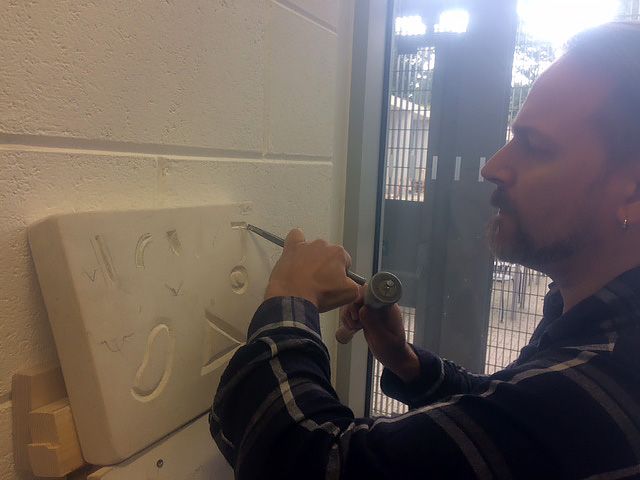
Apprenticeship in Scotland
I studied at the Edinburgh Sculpture Workshop in Scotland with Simon Burns-Cox. He took me on in an intensive individual training.
As a web developper, everything I create is obsolete after a few years. I wanted to learn how to do something that would last: bas-relief sculpture in limestone. I imagined this to be easier than full-fledged sculpting, and therefore a more realistic goal.
My hometown of Hays, Kansas has limestone sculptures by Pete Felten everywhere and I see him as a role model. I love his work, and he looks the part.
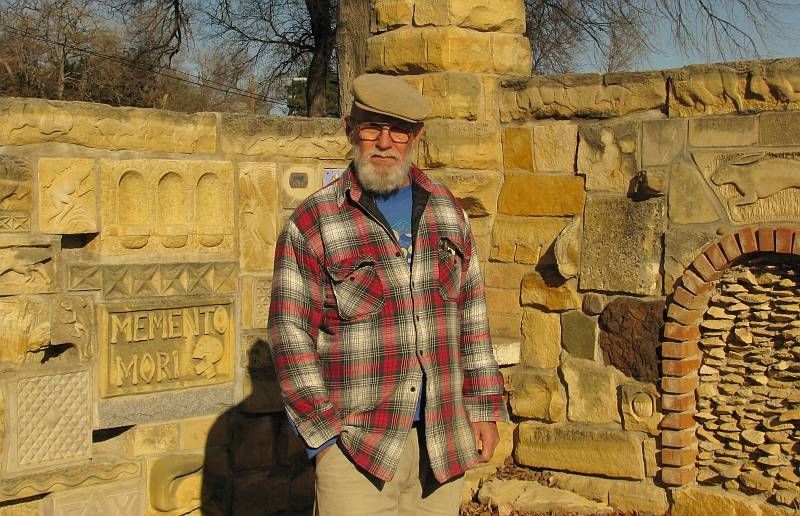
I imagined learning incised-relief (like Egyptian hieroglyphics) but didn’t know the term at the time. I was taught bas-relief which is similar and possibly more difficult due to the removal of more stone.
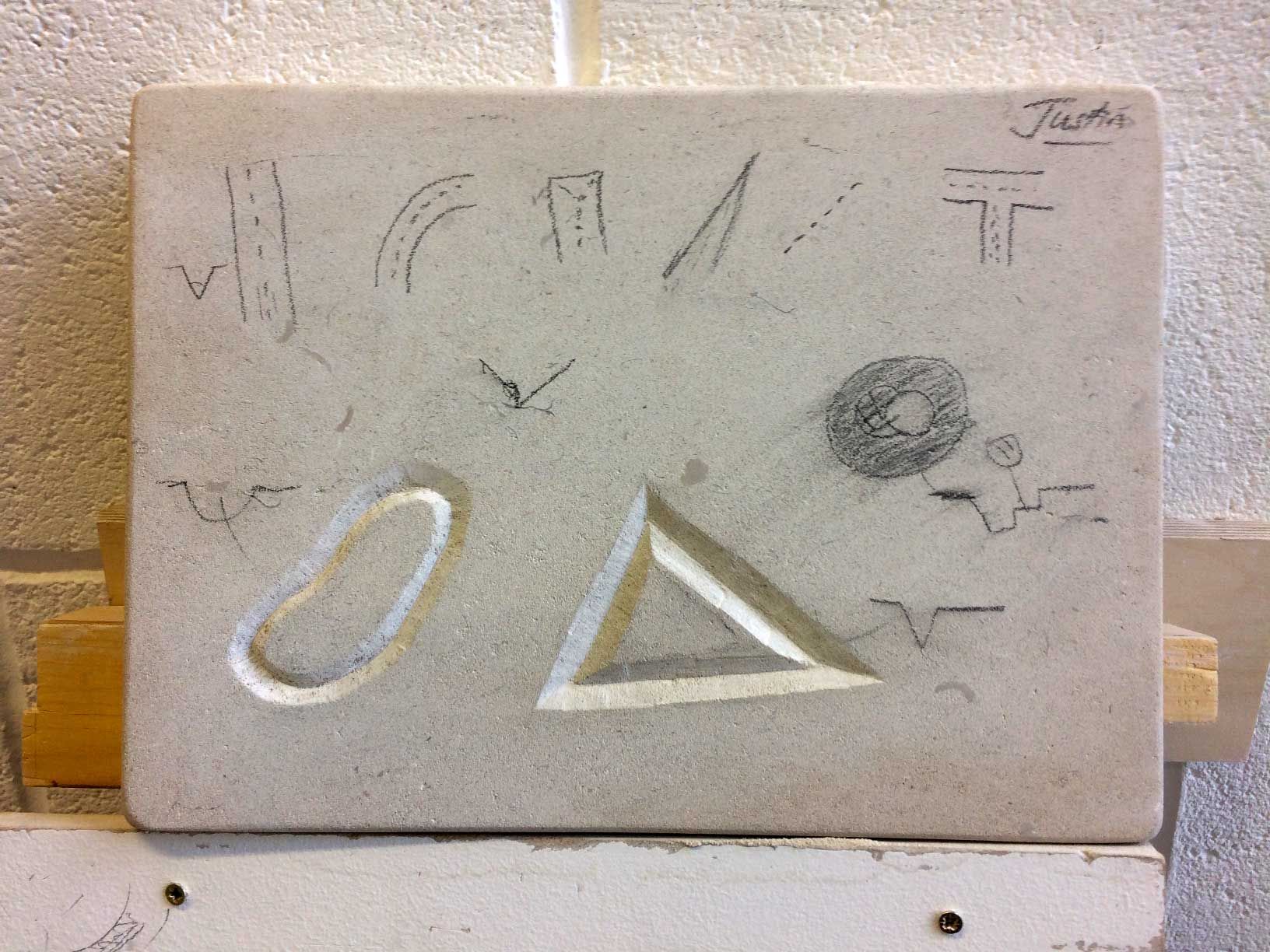
Letter carving
Simon Burns-Cox is a specialist of letter carving (imagine inscriptions on memorials), and he suggested I learn this too. It is similar to typography which I studied in university.
The origin of typset letters?
I had always assumed the serifs and joints of typeset letters were side-effects of calligraphy and pen or brush position, but now I think it must be inspired by the chisel marks of engraved letters. After all, which is more ancient, writing on parchment paper or carving in stone? In fact, the earliest “writing” was around 3100 B.C.E
Characters are formed from the wedge-shaped marks which a corner of the reed makes when pressed into the damp clay - a style of writing known as cuneiform.
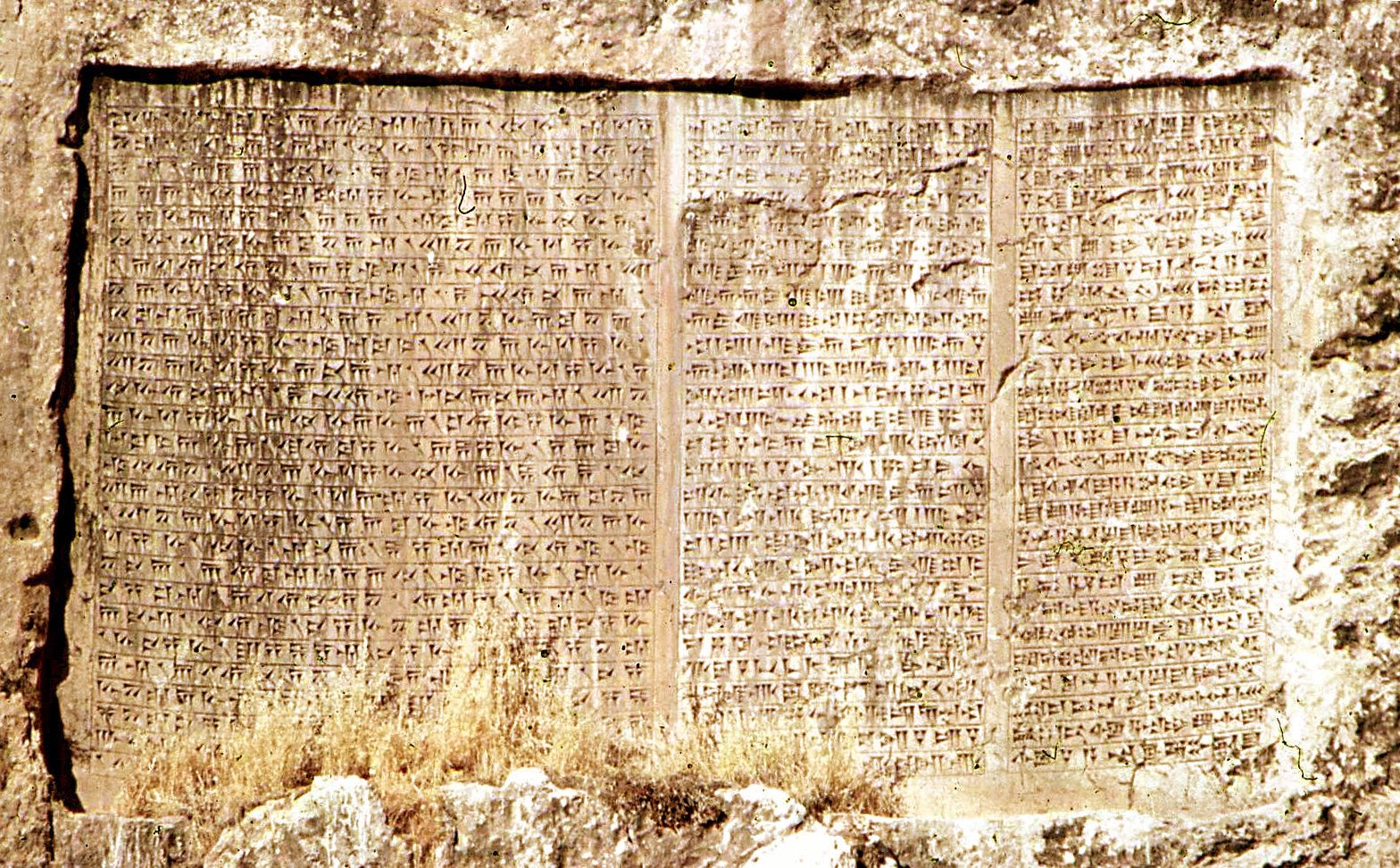
Pressing a reed into clay is similar to carving, in that the tool leaves its mark. So it seems it was indeed the tool that initially determined the form of letters, not a designer who had legibility in mind — that would come later with calligraphy, movable type and ligatures, for example.
Sculpture tools

Stand-up work
Carving stone is physical but relaxing. That’s great if you sit too much at a computer and work with language. Stone carving exercises a part of your brain that’s not occupied reading text, or writing computer code.
Moby Dick
I didn’t want to limit my learning to abstract shapes so I came up with a design.
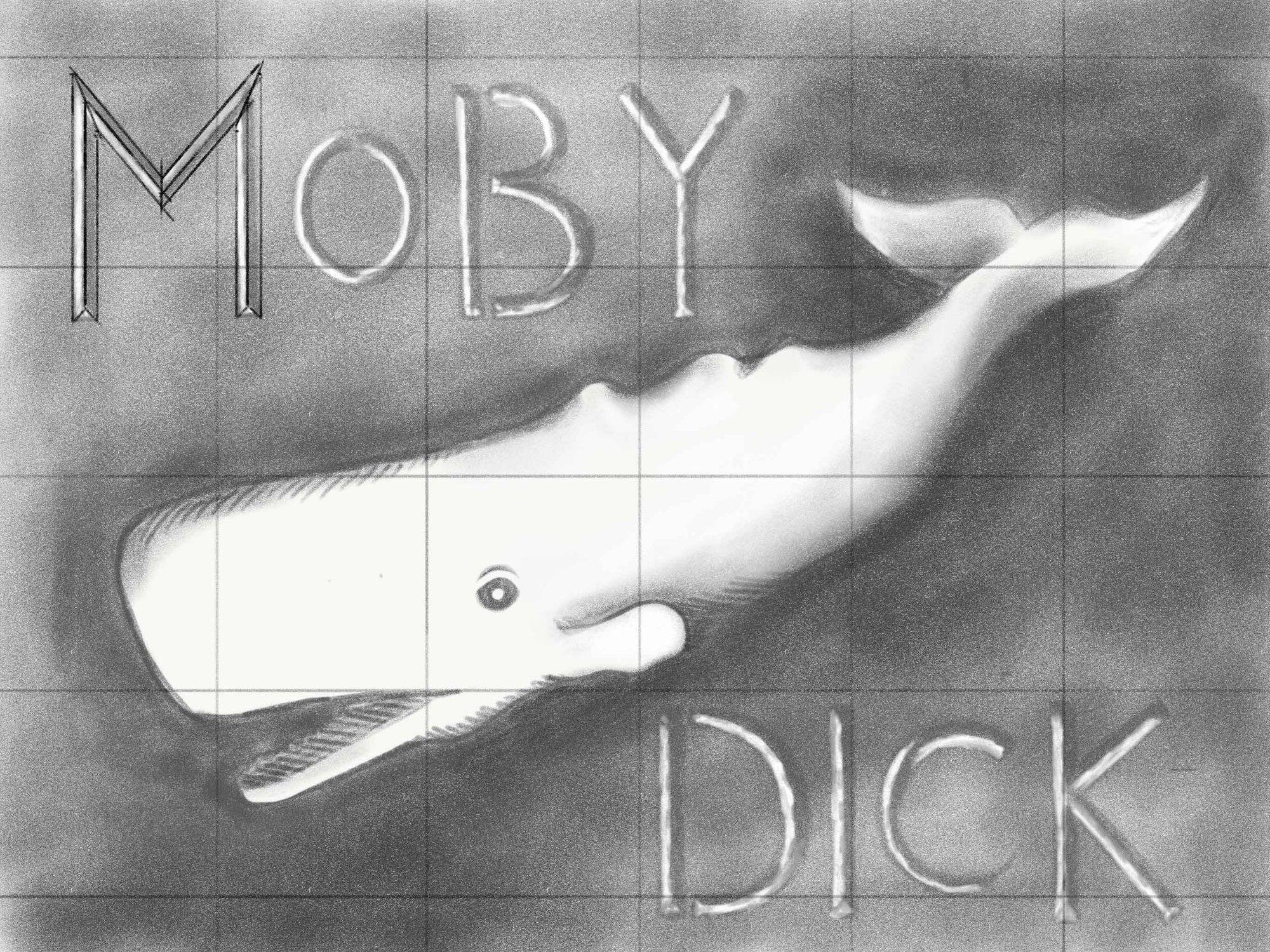
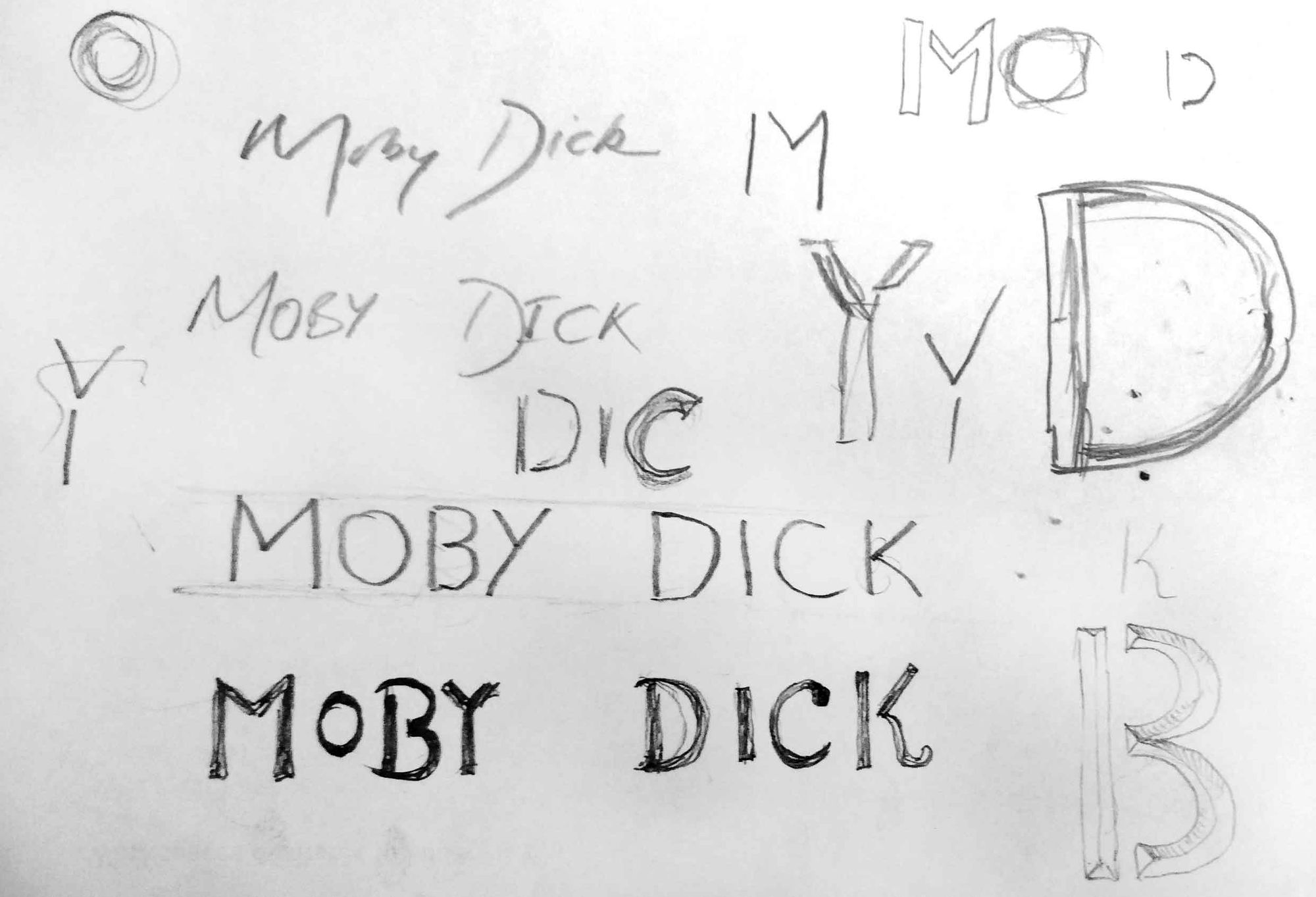
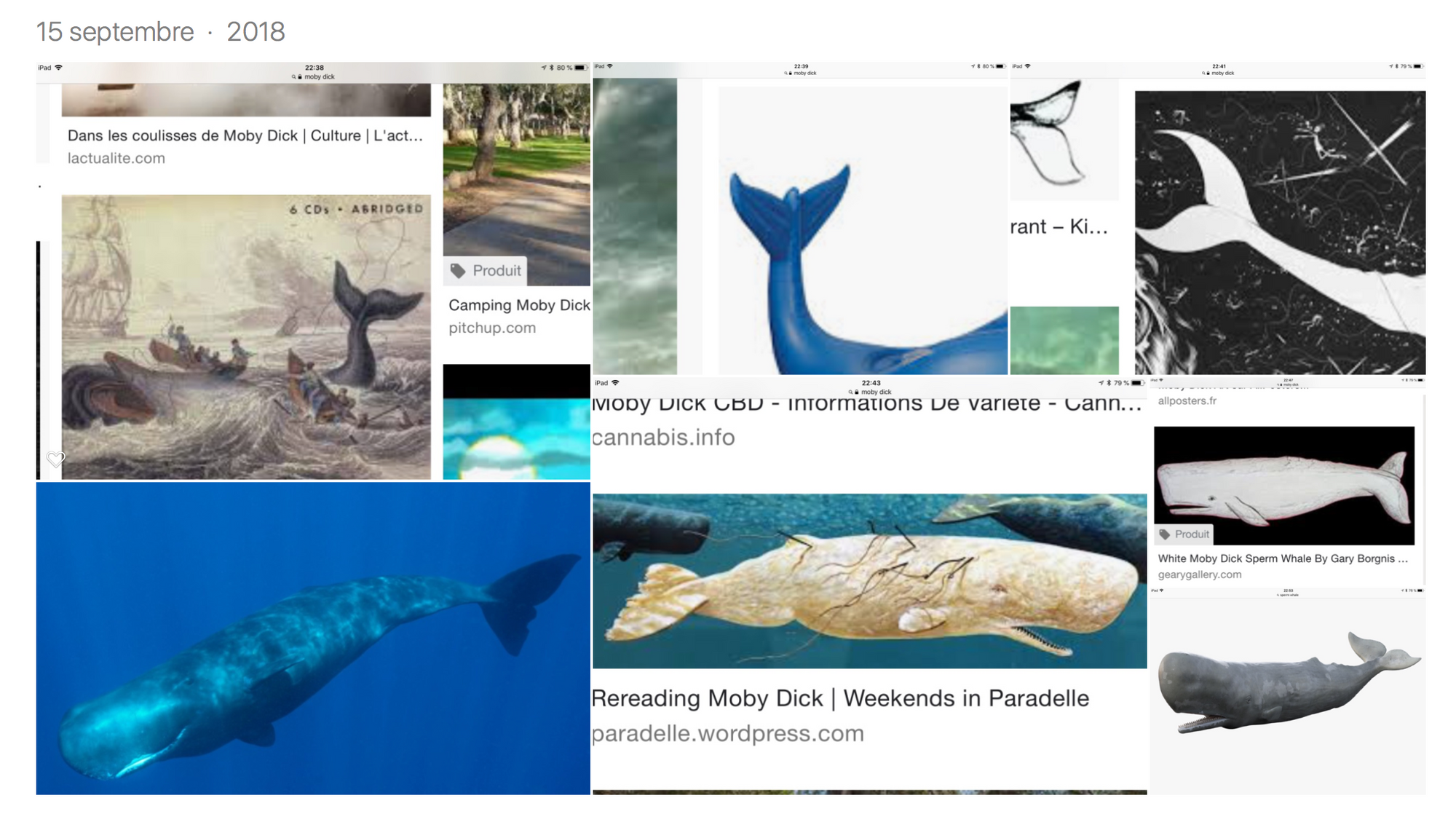




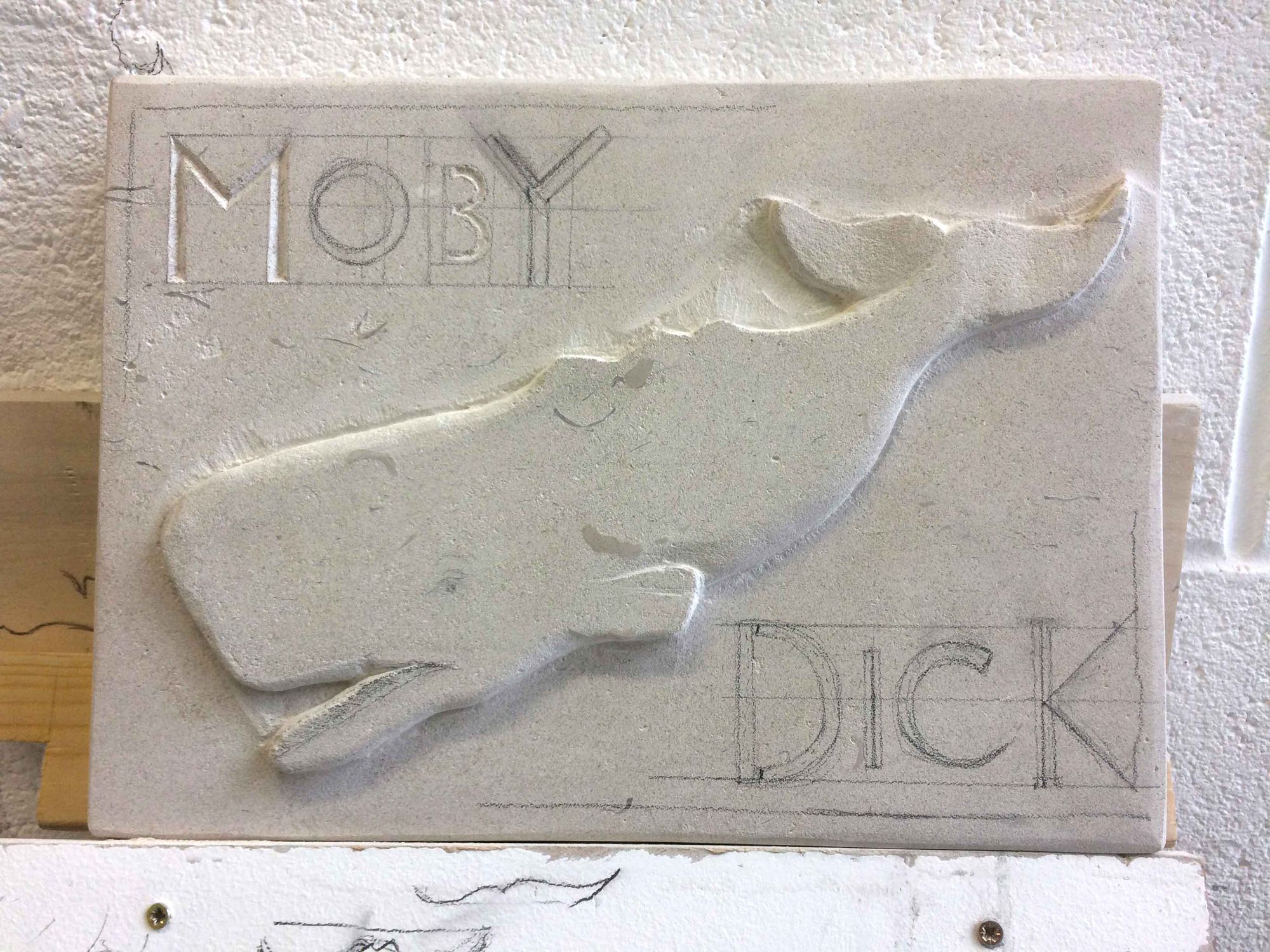
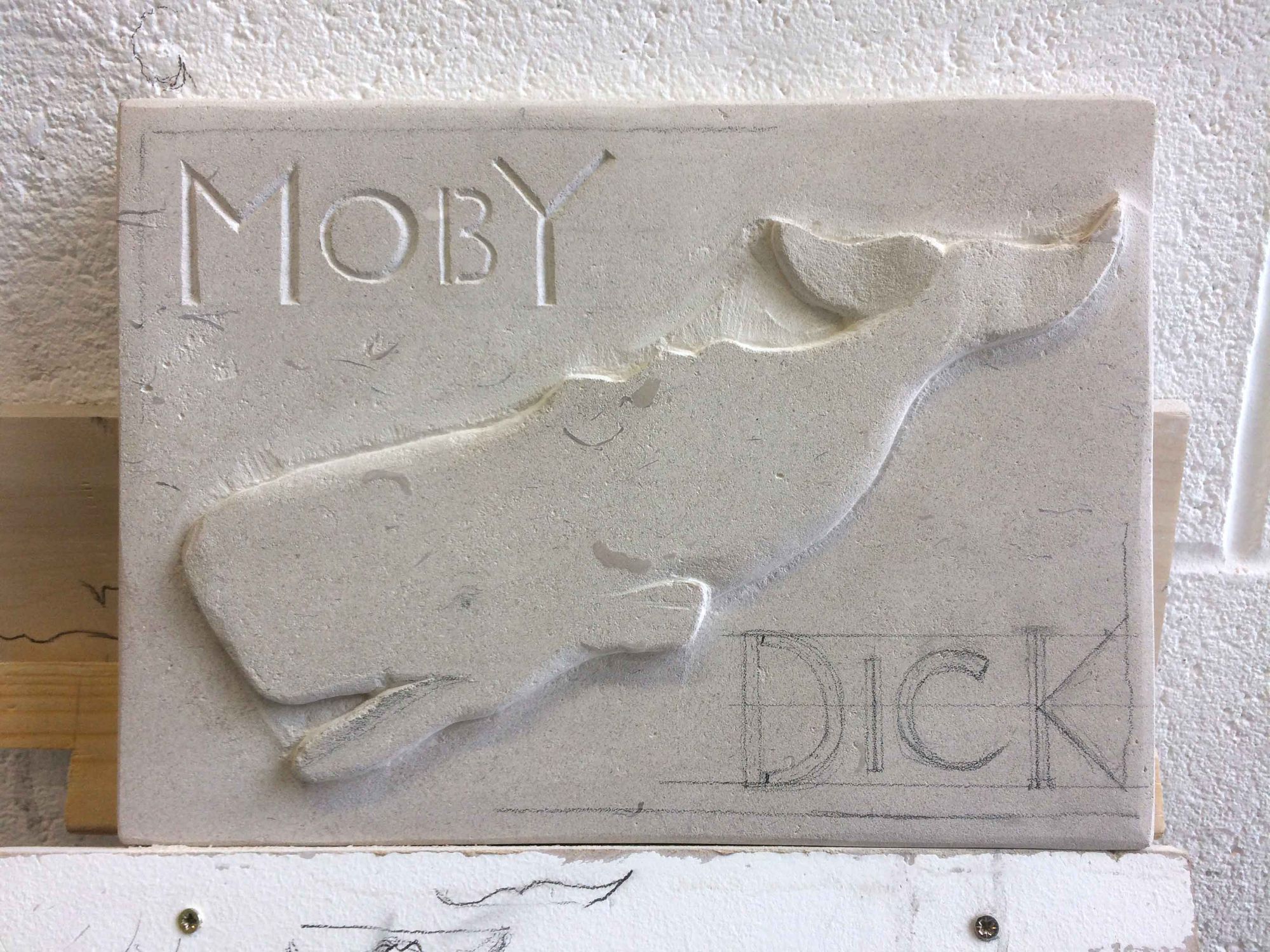



When you think you’ve got the hang of limestone, try carving on marble or granite. Marble feels to me like a very dense plastic. The sound is different.